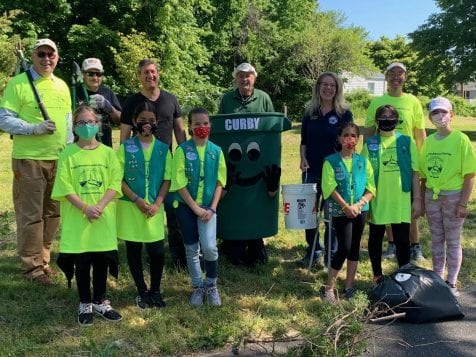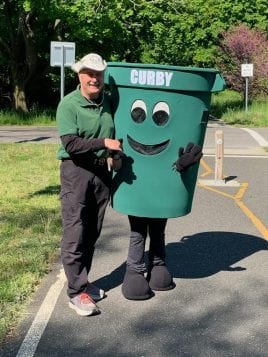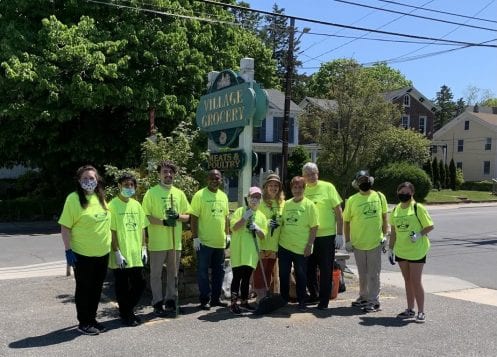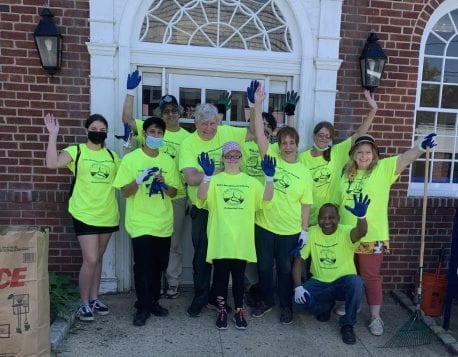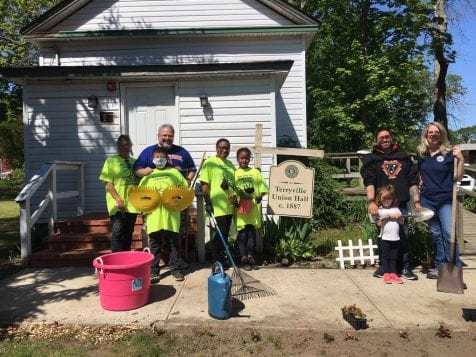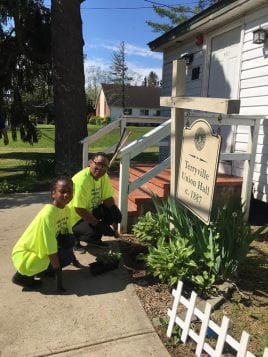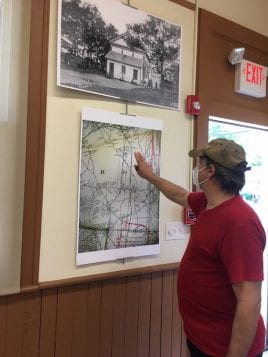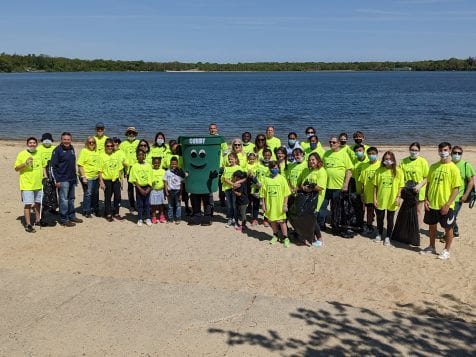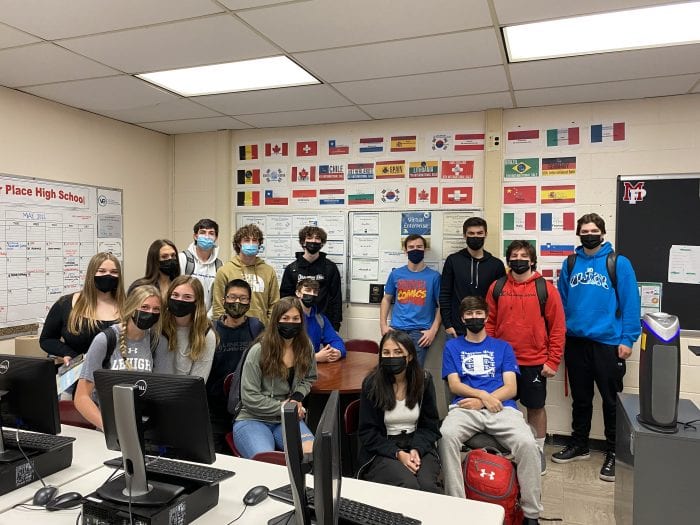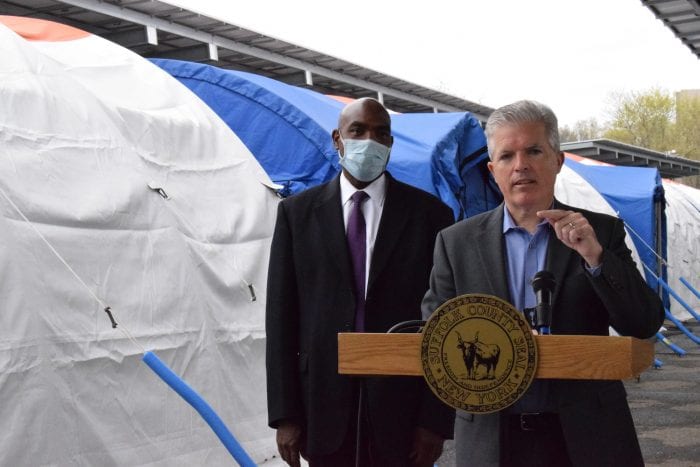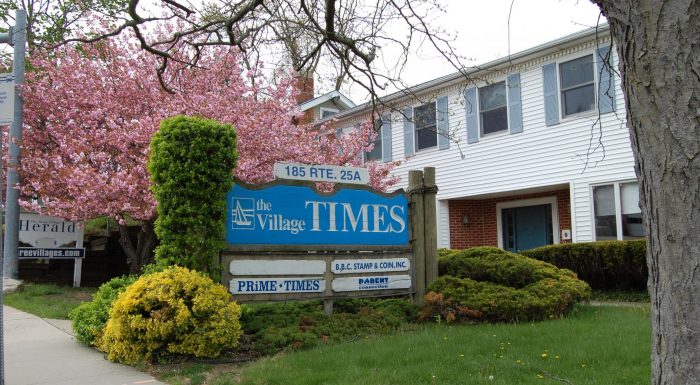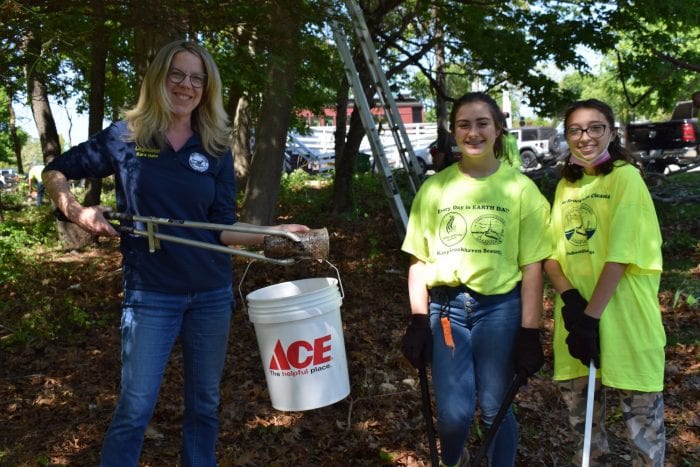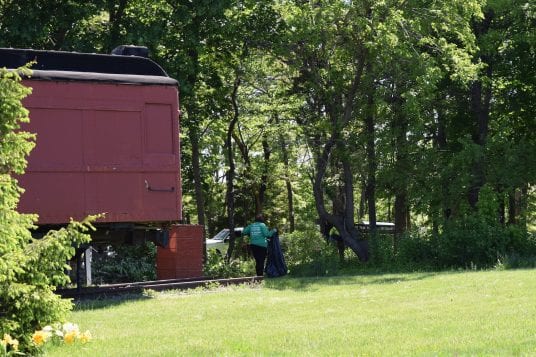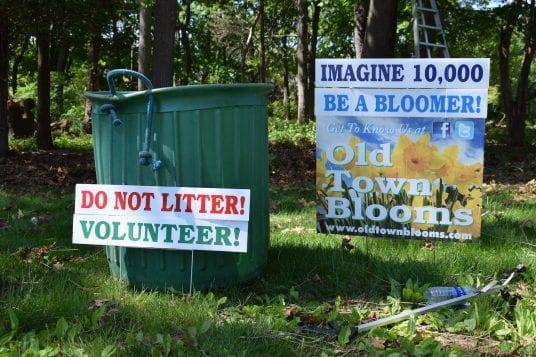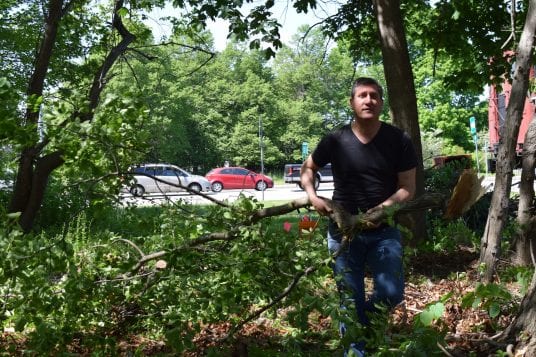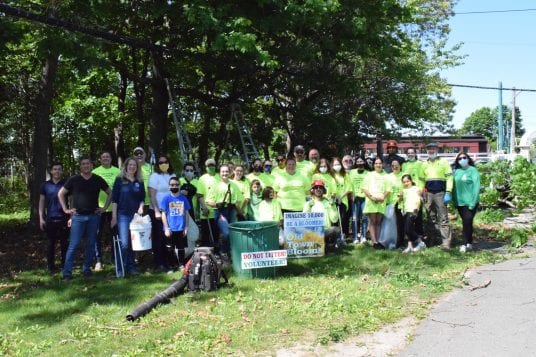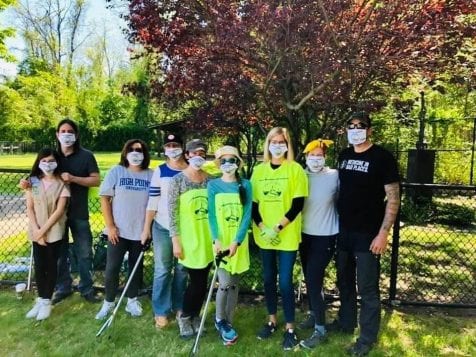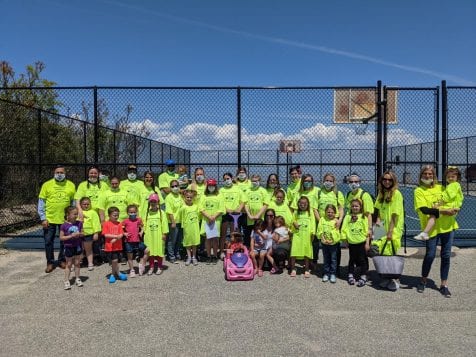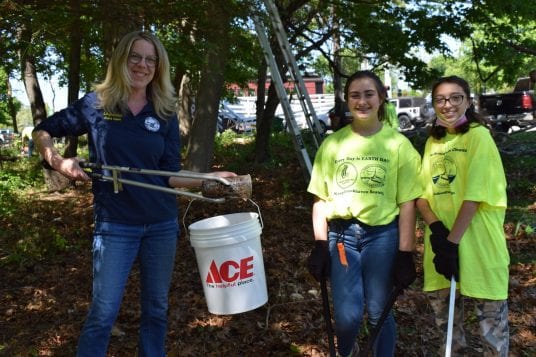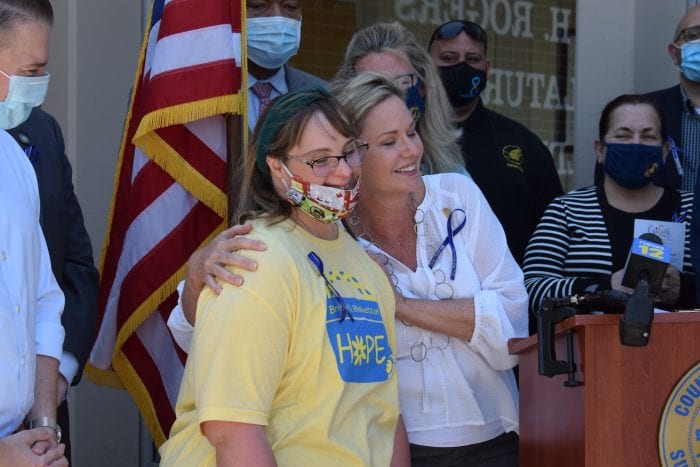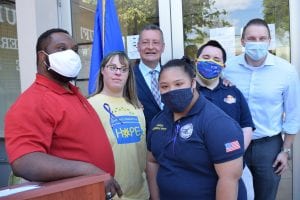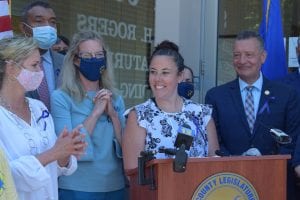Commack Union Free School District
Commack school district residents passed the $205,126,576 budget, 1,981-620.
Challenger Gustave Hueber beat incumbent Jarrett Behar. Hueber received 1,465 votes, while Behar garnered 1,085.
Comsewogue School District
Comsewogue residents passed the $98,479,289 budget, 643-203.
Margaret Mitchell (699), Richard Rennard (695) and Corey Prinz (670) ran unopposed.
Elwood Union Free School District
Elwood school district residents passed the 2021-22 budget of $66,913,579.
Yes – 1,294
No – 481
Incumbents James Tomeo and Heather Mammolito won back their seats on the board with 1,056 votes and 940, respectively. Bryan Johnson received 709 and Amy Kern 758.
Harborfields Central School District
The 2021-22 Harborfields school district budget of $90,316,264 passed.
Yes – 1,422
No – 346
Susan Broderick with 1,012 votes, incumbent Suzie Lustig with 1,019 and Eve Meltzer Krief with 963, won seats on the board of ed. Incumbent Joseph Savaglio received 601 votes, Freda Manuel had 342 and incumbent Steven Engelmann 812.
Hauppauge Union Free School District
The $119,963,719 Hauppauge school district 2021-22 budget was approved.
Yes – 1,154
No – 415
A resolution to repair the Forest Brook Elementary School roof at a cost of $675,000 was adopted, 1,291-270.
Gemma Salvia and Colleen Capece won the two seats on the board, with 767 and 883 votes, respectively. Incumbent Michael Buscarino received 735 and Megan Asseng 585.
Huntington Union Free School District
The $139,315,854 2021-22 school budget in the Huntington school district passed, 993-250.
Residents reelected Christine Biernacki to the board of ed with 914 votes and newcomers Theresa Sullivan and Thomas Galvin received 856 and 786 votes, respectively, to win seats on the board. Incumbent Lynda Tiné-D’Anna lost her seat with 721 votes.
Kings Park Central School District
The Kings Park school district budget of $98,054,941 passed.
Yes – 1,458
No – 642
Incumbents Kevin Johnston and Diane Nally retained their seats with 1,169 and 1,102 votes, respectively. Challengers Cynthia Grimley and Clayton Cobb received 962 and 826, respectively.
Johnston in an email said he was pleased that he and Nally were reelected, “especially after a contentious campaign.”
“Most important was the passing of the budget,” he said. “Diane and I are proud of the accomplishments Kings Park Central School District has made, over the past six years, including lowering class sizes to more manageable levels; adding school psychologists and social workers; having a graduation rate of 99%, with 94% of students opting for post-graduation education; and the return of students, during the COVID pandemic, in a safe and responsible manner. Together, Diane Nally and I look forward to overcoming the financial and educational challenges in the next three years. Finally, we are cognizant of the community’s ability to finance the students’ education, as we kept the [tax cap levy] below 2%.”
Middle Country Central School District
Middle Country residents passed the $269,080,958 budget 1,758-643.
“On behalf of the Middle Country Central School District Board of Education, administration, teachers and staff, I would like to thank our community for their passage of our 2021-2022 school district budget,” said Roberta Gerold, superintendent of schools. “The community’s continued support reinforces our students’ efforts and is a direct reflection of the community’s confidence in the quality of education in our district and the programs and services we provide that ensure the needs of all our students and families are met and exceeded.”
Karen J. Lessler (1,914) and Arlene Barresi (1,893) ran unopposed. John DeBenedetto (1,197) defeated Robert Hallock (779) and Mario Nicoletto (290); Deborah Mann-Rodriguez (929) defeated William Ferraro (879) and Sandro Fernandes (498) for the two-year term remaining on the seat of Dina Phillips, who resigned in the fall and was replaced by Ferraro.
Miller Place Union Free School District
Miller Place residents passed the $76,520,451 budget, 903-257.
Bryan Makarius (609) defeated Desiree O’Neil (490).
Mount Sinai School District
Mount Sinai residents passed the $62,581,830 budget, 656-191.
Karen Pitka (678) and Paul Staudt (665) ran unopposed.
Northport-East Northport Union Free School District
The Northport-East Northport school district 2021-22 budget of $174,704,748 did not pass.
Yes – 1,902
No – 2,069
Incumbent Victoria Buscareno, 2,126 votes, retained her seat on the board and Carol Taylor won the second open seat with 2,079 votes. Warner Frey received 1,356 votes and Tammie Topel garnered 1,534.
Port Jefferson School District
Port Jefferson residents passed the $45,009,729 budget, 579-120.
“The district is extremely grateful to our Port Jefferson community for their continued support of our schools,” said Jessica Schmettan, superintendent of schools. “With the approval of last night’s budget vote, we are poised to further our tradition of academic excellence and ensure our students are prepared for future success.”
Tracy Zamek (473), Ryan Walker (456) and Rene Tidwell (408) defeated Shannon Handley (384).
Rocky Point Union Free School District
Rocky Point residents passed the $85,692,726 budget, 477-124.
Ed Casswell (472) and Michael Lisa (463) ran unopposed.
Shoreham-Wading River Central School District
Shoreham-Wading River residents passed the $80,687,584 budget, 669-215.
“We are again pleased that we are part of a community that wholeheartedly supports our students and school district,” said Gerard Poole, superintendent of schools. “Our longstanding tradition of students’ academic, artistic and athletic success is reflected in our community’s expectations and moving forward with this approved budget enables us to continue with Shoreham-Wading River’s mission and goals while maintaining our commitment to fiscal responsibility.”
Incumbents Robert Rose (689) and James Smith (670) ran unopposed.
Smithtown Central School District
Smithtown school district residents approved the budget of $262,319,665.
Yes – 5,180
No – 3,245
The incumbents Jeremy Thode, Charles Rollins and Mandy Kowalik were voted off the board as residents chose challengers John Savoretti, Karen Wontrobski-Rollins and Stacy Murphy for the three seats up for grab.
Seat of Charles Rollins:
Charles Rollins – 3,868 votes
John Savoretti – 4,645 votes
Seat of Jeremy Thode:
Jeremy Thode – 4,000 votes
Karen Wontrobski-Ricciardi – 4,504 votes
Seat of Mandi Kowalik:
Mandi Kowalik – 3,854 votes
Stacy Murphy – 4,651 votes
The 2020-21 school year began with a tumultuous start for the Smithtown school district when local parents rallied in front of the administration building before various board of education meetings demanding schools to be opened five days a week for in-person learning during the pandemic. The charge was led by the Facebook group Smithtown Parents Watchdog Group, which was founded by Murphy, a guidance counselor in the Amityville school district.
In an email Thode said the “community support of the budget” was the number one priority.
“This was a highly contested election that sparked a great deal of dialogue,” Thode said. “Conversation is good. Community engagement is good. I hope they both continue.”
Thode said he believes he made positive contributions during his two terms on the board.
“I have learned that we have great students, staff and families,” he added. “The district is in great hands. We have excellent schools and a passionate community. I congratulate the new BOE members and wish them well. Ultimately, the community wants what is best for children. I am sure this new BOE will unite in that goal. I look forward to watching our children thrive.”
Savoretti, Wontrobski-Ricciardi and Murphy emailed a joint statement the day after their victory.
“We stepped up to the challenge to run for Smithtown Board of Education to make a positive change for our kids and their parents, many who have felt voiceless, unhappy with the current situation in our schools and frustrated with the lack of response to our concerns,” the winners said. “In addition, we firmly believe that our children and youth should be provided a quality education where they are only taught how to think, as opposed to what to think.”
The three acknowledged stumbling blocks along the way despite the support they received from parents in the district. Their campaign page on Facebook had nearly 900 followers.
“Although this campaign was a very positive movement, we were faced with divisive and hurtful tactics by many who disagreed with or assumed we stood for something very different,” they said. “Many false stories spread about us related to ideologies we did not embrace.”
Savoretti, Wontrobski-Ricciardi and Murphy added, “Moving forward, we choose to be leaders in healing this community. We look forward to working with the existing board members and extending our hands to find common ground, prioritizing the needs of every student. At the end of the day, that’s why we got involved … for the children of this community and future generations to come.”
Three Village Central School District
In Three Village school district, the $222.6 million budget did not pass as 60% approval was needed to approve the budget that pierced the 1.37% cap with a proposed tax levy increase of 1.85%.
Yes – 2,286 (57.68%)
No – 1,677
Deanna Bavlnka retained her seat on the board with 2,076 votes, while Sue Rosenzweig and Shaorui Li won the other two open seats with 2,202 and 2,326 votes respectively.
David McKinnon received 1,917 votes and Karen Roughly 1,754.
Bavlnka, Li and Rosenzweig campaigned together. Bavlnka is a corporate director of human resources. Shaorui Li is a principal engineer and research group manager at a national laboratory as well as an adjunct faculty member at Stony Brook University, while Rosenzweig is a former anchor at News 12.
Li ran last year unsuccessfully.
“I’m very proud of our Three Village community with so many people dedicated to supporting high-quality public education,” Li said. “Together we will assist our young generation toward a brighter future.”
Additional reporting by Julianne Mosher

























